How to Start a Food Delivery Service in 6 Steps
Ryan Hines and Jay Kulas’ newly opened restaurant, The Rustic Spoon, had a wait time of over 90 minutes on weekends. But within six weeks of opening, the restaurant had to shut down dine-in operations due to COVID-19. Sales dropped by 80%, and the owners had to let go of most of their staff. The restaurant is now trying to stay afloat by offering takeout options and self-delivering food to customers.
Hundreds of restaurants in the U.S. and across the world are facing similar hardships.
With the COVID-19 crisis resulting in a shutdown of most dine-in operations, restaurateurs are putting together delivery services to keep up sales. But if you have no prior experience in setting up or managing food delivery, this can prove to be a challenge.
To help businesses such as yours, we’ve put together resources on how to start a food delivery service. Here are six steps you should follow to set up the delivery arm of your restaurant.
Step #1: Research the market
The online food delivery service market is expected to grow by more than $40 billion over the next three years to reach $154.34 billion in 2023. That said, it’s also important to note that food delivery is a low-margin business with tough competition.
Conduct thorough research to understand market dynamics and build a suitable entry strategy. Here are some key aspects to consider:
Competitors
The food delivery service market is largely dominated by platform-to-consumer and restaurant-to-consumer players who have their own delivery logistics. The former includes food delivery platforms such as Postmates and Uber Eats, while the latter includes restaurant chains such as Dominos and McDonald’s. Study the pricing patterns, online menus, and market strategies of these players to position your business favorably against theirs.
Partnerships
Most restaurants choose to partner with third-party platforms, such as Uber Eats or DoorDash. This is one of the easiest and quickest ways of starting delivery services, though you’ll have to pay commission, listing, and delivery fees. Study all potential partners and talk to their representatives directly for complete information. You can also consult your peers for their opinion and reviews.
Opportunities and threats
Perform a strength, weakness, opportunity, and threat (SWOT) analysis to compare key aspects of your business vis-à-vis your competitors. The analysis will help you leverage your strengths, assess weaknesses, take on new opportunities, and identify threats. For example, if most of your employees have vehicles, you can use their help to set up delivery logistics.
Market gaps
Despite market demand, there may be fewer players servicing a specific neighborhood or serving a particular type of cuisine. Check if you can cater to such unattended customer segments and make more profit.
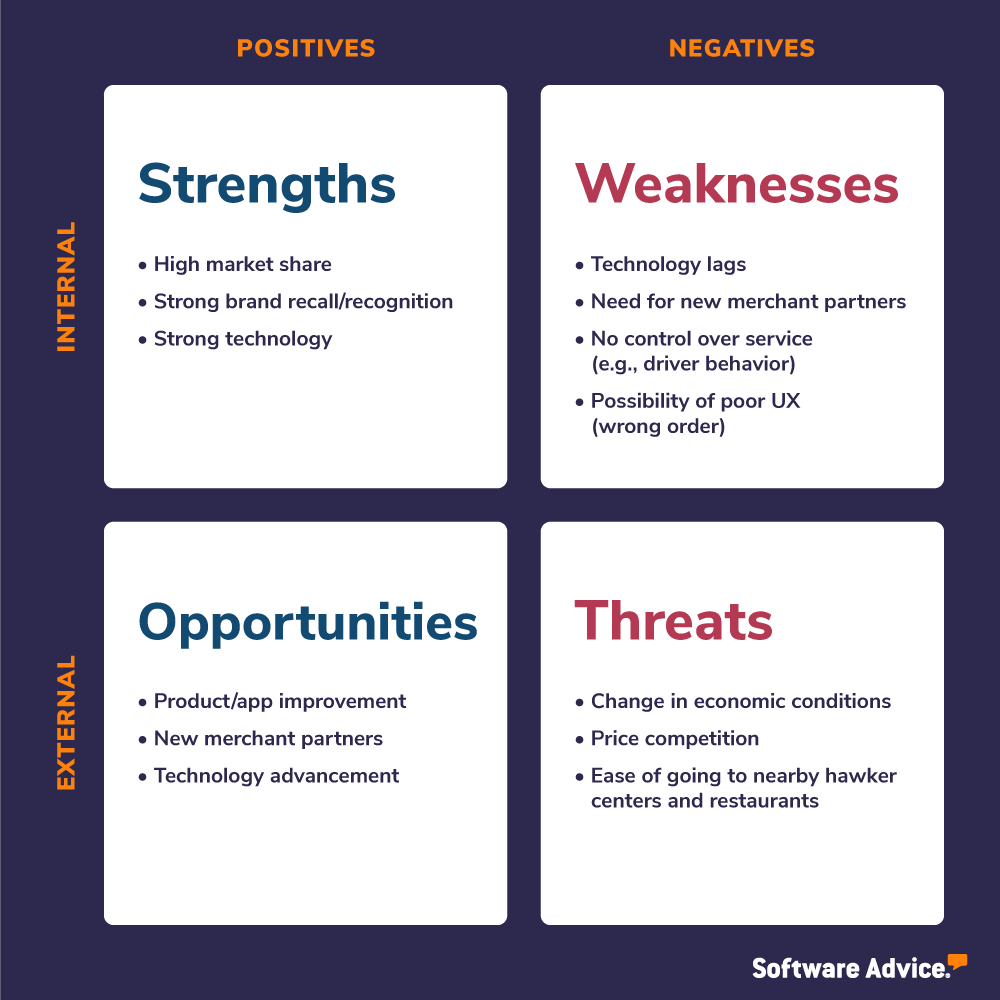
SWOT analysis of a food delivery company (Source)
Step #2: Define your target audience
Your dine-in restaurant already has an audience. Try targeting the same customers for your delivery service as well. They already know your brand and have an existing relationship with it.
Based on the research you’ve conducted, decide if you’d also like to cater to other market segments. Ensure that the location or area within which you plan to deliver has enough potential customers. A satisfactory customer demographic mix will include good numbers of working families, college students, hostelers, and millennials.
You may also have to tweak your delivery menu based on the preferences of your target audience(s). Families might be interested in healthy food options, while students might want meal and snack options that are not too expensive.
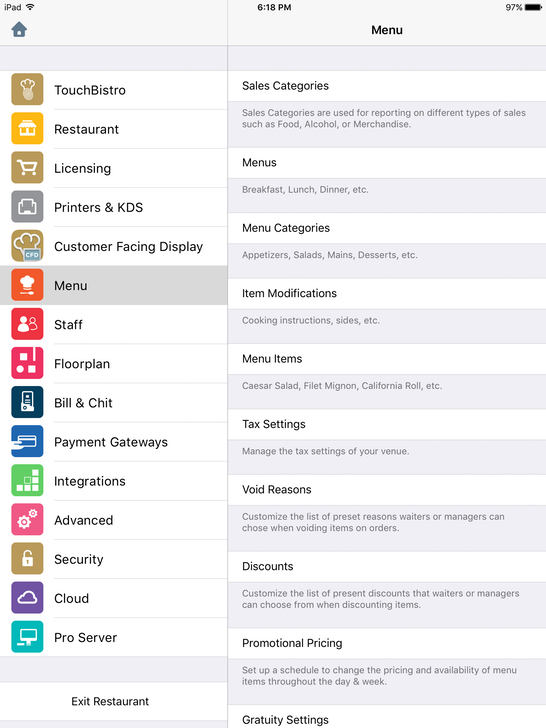
Menu customization options in TouchBistro (Source)
Step #3: Determine initial investment and related costs
As per experienced entrepreneurs, startup costs for a restaurant delivery business can range anywhere between $3,000 and $25,000 with monthly overheads touching $600 to $10,000. Let’s discuss some of the major expenses involved in setting up and running a food delivery service.
Website development expenses
Initially, you can take orders via calls and text messages, but in the long run, it’s advisable to have your own website. You can use DIY website builder apps to create a website yourself or hire a professional if you have a flexible budget.
Software purchase/subscription
Point-of-sale (POS) software (to collect online payments) and GPS tracking apps (to track deliveries) are the basic software tools you’ll need to start your delivery service. Free versions of these tools should suffice your initial business needs. As your service expands, you can choose to upgrade to access more features.
Logistics costs
Building your own delivery fleet involves high investment. Initially, you can work around this cost by using your or your staff’s vehicles for delivery. As your business grows, you can purchase or hire delivery vehicles. Having your own delivery logistics will help save the commission you’d have to pay to third parties for delivering food to your customers.
Marketing expenditure
You’ll need to set aside a budget for marketing your products and services. Email marketing, social media marketing, pamphlets, hoardings, participation in events, etc.—these are some of the common methods to promote your food delivery service.
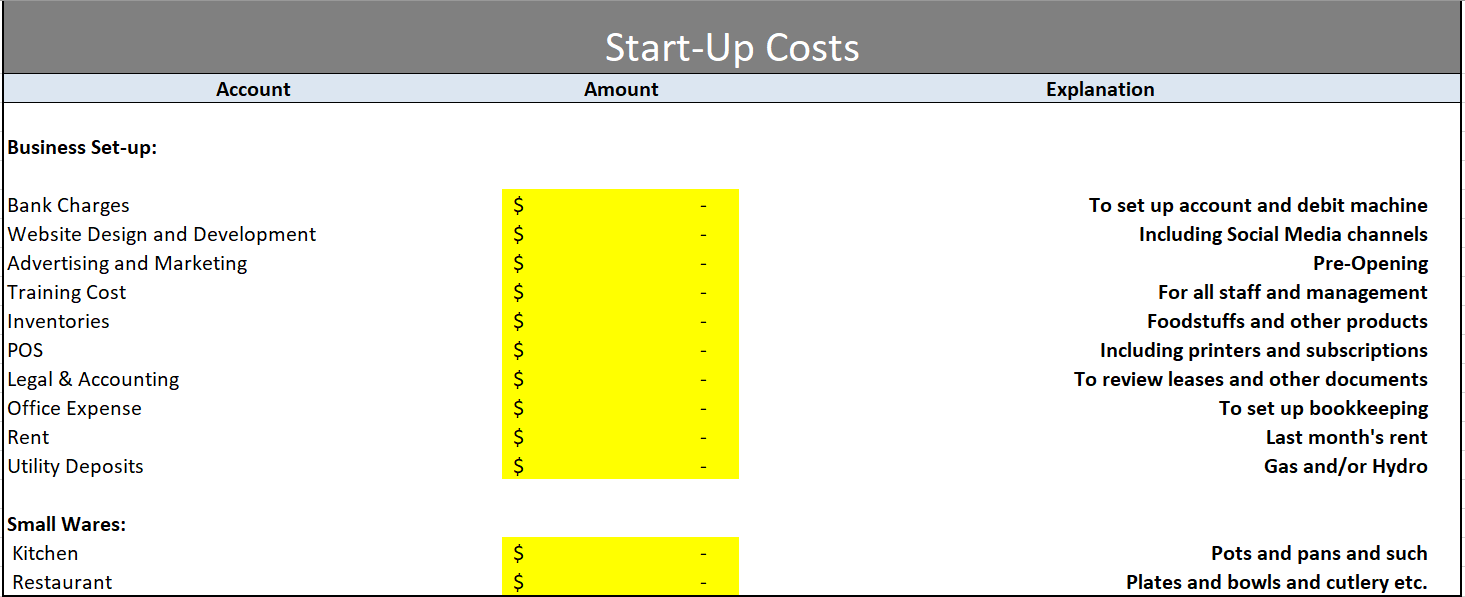
TouchBistro’s template to record startup costs (Source)
Step #4: Ensure your licenses are in place
You’ll already have business and food service licenses for your restaurant. Contact your town or city clerk’s office to check if there are any additional licenses you’ll need to start delivering food. Since regulatory requirements vary from state to state, you can visit the U.S. Small Business Administration (SBA) website to get complete information on state licenses and permits.
Step #5: Set up suitable channels for receiving orders
You have the option of taking orders through phone calls, text messages, WhatsApp messages, websites, mobile applications, and social media.
Orders via phone calls and text and WhatsApp messages require the least investment. Your social media handles can serve as a multipurpose channel, helping you collect orders as well as promote your business.
You can also use food delivery software as a one-stop solution to create your website, receive orders, and manage delivery. The software offers POS integration as well as GPS tracking. Initially, you can try out a free food delivery app and then move to a paid version, if required. Some food delivery apps charge a standard fee per order or a percentage of your total sales.
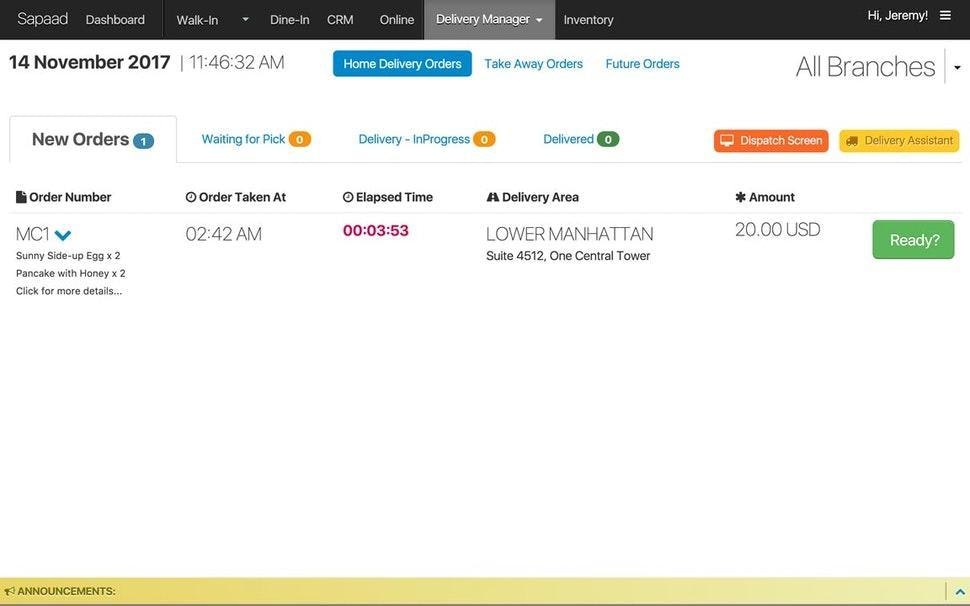
Order management in Sapaad (Source)
Step #6: Market your service
Let your customers know that you’ve started delivering food. Promote your business through pamphlets, text messages, social media messages, etc.
Use analytics tools to build suitable engagement strategies and social media marketing tools to create, schedule, and post promotional messages. You can also run SMS or WhatsApp campaigns to inform customers about the deal of the day, chef’s special, discounts, and more.
Food delivery software such as Flipdish and GloriaFood offer digital marketing features such as push notifications, SMS and phone marketing, email marketing templates, and loyalty campaigns at no additional cost.
Inform customers about the food preparation, sanitation, and hygiene measures you follow. Additionally, train your delivery personnel to handle customers politely. Their punctuality and behavior toward customers also help promote your business.
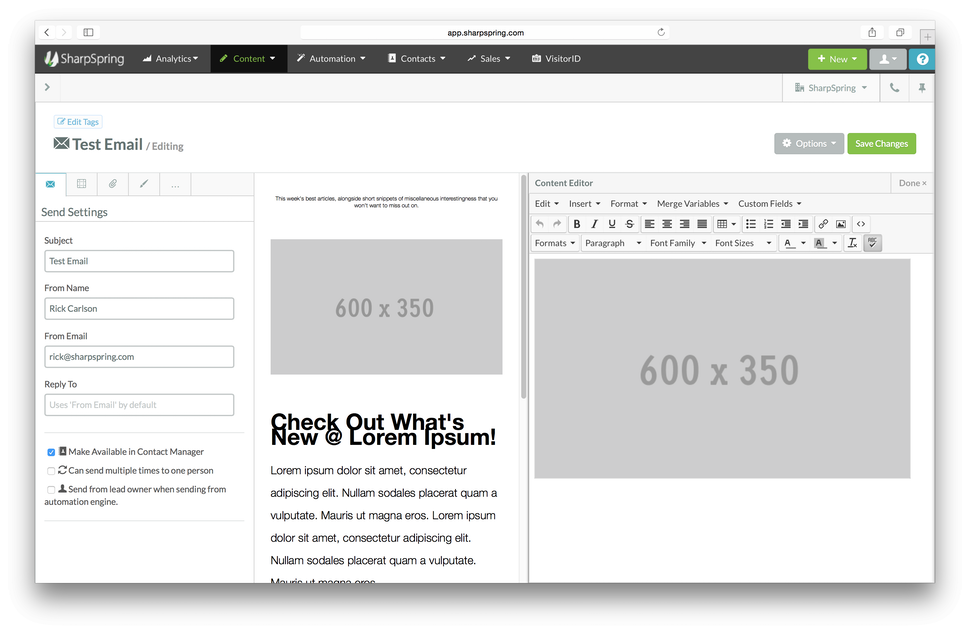
Email marketing template in SharpSpring (Source)
Using technology to build a successful food delivery service
You may be an expert at dishing out the yummiest food, but technology may not be your strongest point. Let us help you with the digital aspects of managing your food delivery business—right from choosing a cost-effective website builder app to ensuring you have the safest POS system and the most accurate GPS tracking tool.
Browse through our food delivery software catalog to identify tools that match your business needs. You can also check out our FrontRunners report to identify the top market players.
If you need personalized assistance with software selection, schedule an appointment with our advisors for a free, no-obligation consultation.
Note: The applications selected in this article are examples to show a feature in context and are not intended as endorsements or recommendations. They have been obtained from sources believed to be reliable at the time of publication.